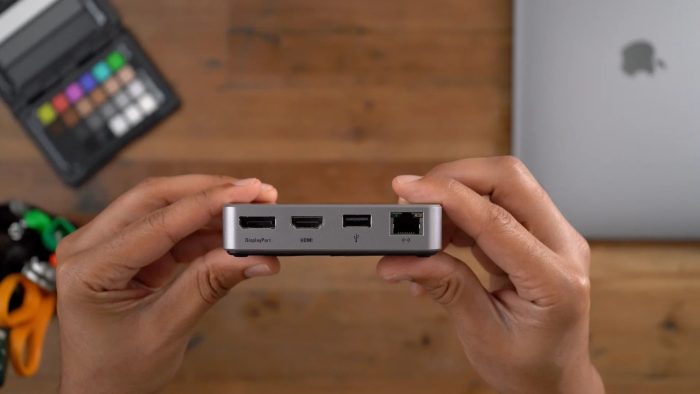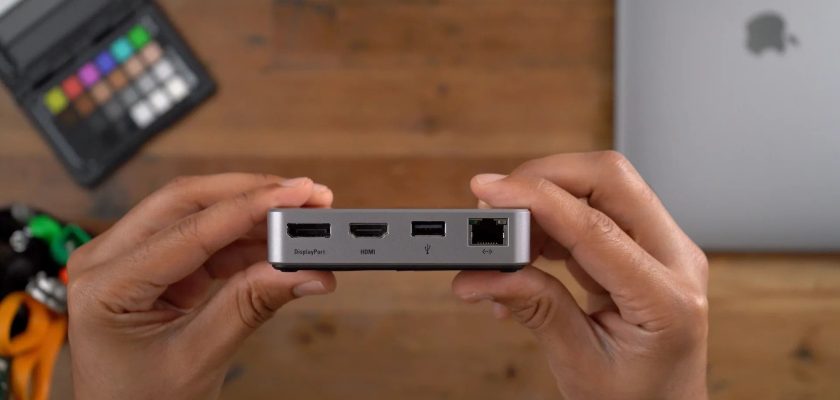
If you’re an avid Mac user or a tech enthusiast, you’ve probably heard of Thunderbolt technology. It’s a high-speed data transfer technology that was first introduced by Apple in 2011. Thunderbolt technology is a collaboration between Intel and Apple, and it’s designed to provide fast data transfer rates and support multiple high-resolution displays.
One of the most important features of Thunderbolt technology is the Thunderbolt Bridge, which enables the connection of multiple Thunderbolt devices to a single computer. In this article, we’ll take a closer look at Thunderbolt Bridge and how it works.
What is Thunderbolt Bridge?
A Thunderbolt Bridge is a virtual connection between two or more Thunderbolt-enabled devices. It enables data transfer between the connected devices at lightning-fast speeds. The Thunderbolt Bridge feature is available in Mac OS X 10.7 Lion and later versions.
To create a Thunderbolt Bridge, you need to have at least two Thunderbolt-enabled devices connected to your Mac. Once you’ve connected the devices, you can create the Thunderbolt Bridge by following these steps:
Open the “System Preferences” menu on your Mac.
Click on the “Network” icon.
Click on the “+” button at the bottom of the list of interfaces.
Select “Thunderbolt Bridge” from the list of interface types.
Click “Create.”
You can now use the Thunderbolt Bridge to transfer data between the connected devices.
Benefits of Thunderbolt Bridge
The Thunderbolt Bridge offers several benefits, including:
Fast Data Transfer: Thunderbolt technology provides transfer rates of up to 40Gbps, which is twice as fast as USB 3.1 Gen 2 and eight times faster than USB 3.0. The Thunderbolt Bridge allows you to transfer data between Thunderbolt-enabled devices at these lightning-fast speeds.
Daisy Chaining: The Thunderbolt Bridge allows you to daisy chain multiple Thunderbolt-enabled devices to your Mac. This means you can connect multiple devices to your Mac using a single Thunderbolt port, which saves you the hassle of having to connect each device separately.
Multiple Displays: Thunderbolt technology allows you to connect multiple displays to your Mac. With the Thunderbolt Bridge, you can connect multiple Thunderbolt-enabled displays to your Mac and use them simultaneously.
Flexibility: The Thunderbolt Bridge is highly flexible and can be used with a wide range of Thunderbolt-enabled devices, including external hard drives, displays, and audio interfaces.
Examples of Thunderbolt Bridge Usage
The Thunderbolt Bridge is used in various industries, including:
Audio and Video Production: Thunderbolt technology is widely used in the audio and video production industry. The Thunderbolt Bridge enables data transfer between Thunderbolt-enabled audio interfaces, mixers, and video cameras, allowing for high-quality audio and video production.
Photography: Thunderbolt technology is also used in the photography industry. The Thunderbolt Bridge enables data transfer between Thunderbolt-enabled cameras and external hard drives, allowing for faster and more efficient photo editing.
Gaming: Thunderbolt technology is becoming increasingly popular in the gaming industry. The Thunderbolt Bridge allows gamers to connect multiple Thunderbolt-enabled displays to their Mac and play games at high resolutions and frame rates.
Conclusion
Thunderbolt technology has revolutionized the way we transfer data between devices. The Thunderbolt Bridge is a vital component of Thunderbolt technology, enabling fast data transfer between Thunderbolt-enabled devices. Its benefits include fast data transfer, daisy chaining, multiple displays, and flexibility. The Thunderbolt Bridge is widely used in various industries, including audio and video production, photography, and gaming. With Thunderbolt technology, data transfer is faster and more efficient, making it an essential component in today’s digital world. As technology continues to evolve, Thunderbolt technology will likely become even faster and more powerful, further improving the way we connect and transfer data between our devices.
However, it’s important to note that not all devices are compatible with Thunderbolt technology, and some may require the use of an adapter or converter to work with Thunderbolt-enabled devices. Additionally, Thunderbolt technology is a proprietary technology developed by Apple and Intel, which means that it may not be as widely adopted as other standards such as USB.
In conclusion, Thunderbolt Bridge is a vital component of Thunderbolt technology that enables fast and efficient data transfer between Thunderbolt-enabled devices. It offers several benefits, including fast data transfer, daisy chaining, multiple displays, and flexibility. With Thunderbolt technology, we can connect and transfer data between our devices faster and more efficiently than ever before, making it an essential technology in today’s digital world.

